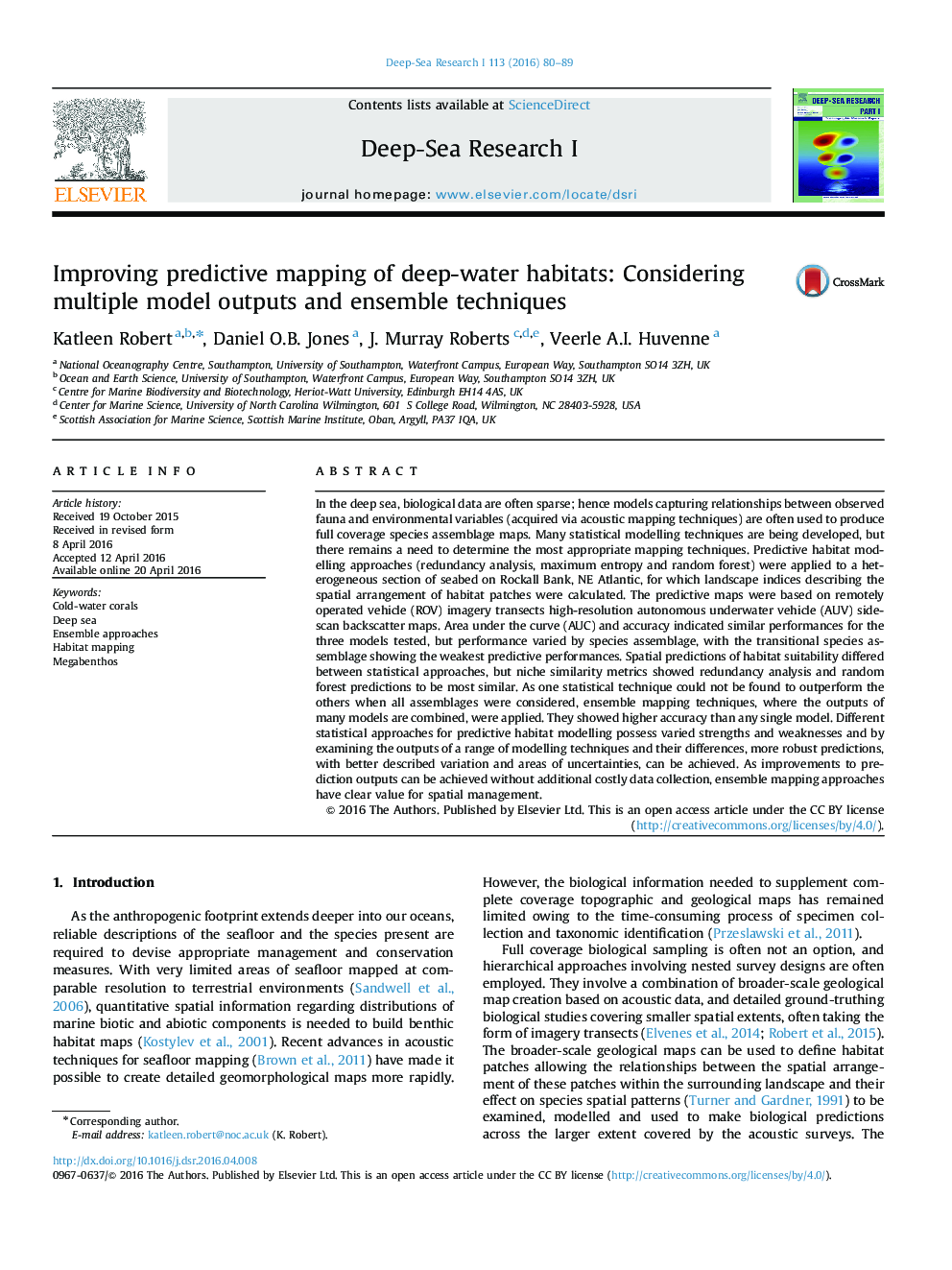| کد مقاله | کد نشریه | سال انتشار | مقاله انگلیسی | نسخه تمام متن |
|---|---|---|---|---|
| 6383369 | 1626317 | 2016 | 10 صفحه PDF | دانلود رایگان |
عنوان انگلیسی مقاله ISI
Improving predictive mapping of deep-water habitats: Considering multiple model outputs and ensemble techniques
ترجمه فارسی عنوان
بهبود نقشه پیش بینی زیستگاه های عمیق: با توجه به خروجی های مدل چند و تکنیک های گروهی
دانلود مقاله + سفارش ترجمه
دانلود مقاله ISI انگلیسی
رایگان برای ایرانیان
کلمات کلیدی
موضوعات مرتبط
مهندسی و علوم پایه
علوم زمین و سیارات
زمین شناسی
چکیده انگلیسی
In the deep sea, biological data are often sparse; hence models capturing relationships between observed fauna and environmental variables (acquired via acoustic mapping techniques) are often used to produce full coverage species assemblage maps. Many statistical modelling techniques are being developed, but there remains a need to determine the most appropriate mapping techniques. Predictive habitat modelling approaches (redundancy analysis, maximum entropy and random forest) were applied to a heterogeneous section of seabed on Rockall Bank, NE Atlantic, for which landscape indices describing the spatial arrangement of habitat patches were calculated. The predictive maps were based on remotely operated vehicle (ROV) imagery transects high-resolution autonomous underwater vehicle (AUV) sidescan backscatter maps. Area under the curve (AUC) and accuracy indicated similar performances for the three models tested, but performance varied by species assemblage, with the transitional species assemblage showing the weakest predictive performances. Spatial predictions of habitat suitability differed between statistical approaches, but niche similarity metrics showed redundancy analysis and random forest predictions to be most similar. As one statistical technique could not be found to outperform the others when all assemblages were considered, ensemble mapping techniques, where the outputs of many models are combined, were applied. They showed higher accuracy than any single model. Different statistical approaches for predictive habitat modelling possess varied strengths and weaknesses and by examining the outputs of a range of modelling techniques and their differences, more robust predictions, with better described variation and areas of uncertainties, can be achieved. As improvements to prediction outputs can be achieved without additional costly data collection, ensemble mapping approaches have clear value for spatial management.
ناشر
Database: Elsevier - ScienceDirect (ساینس دایرکت)
Journal: Deep Sea Research Part I: Oceanographic Research Papers - Volume 113, July 2016, Pages 80-89
Journal: Deep Sea Research Part I: Oceanographic Research Papers - Volume 113, July 2016, Pages 80-89
نویسندگان
Katleen Robert, Daniel O.B. Jones, J. Murray Roberts, Veerle A.I. Huvenne,
